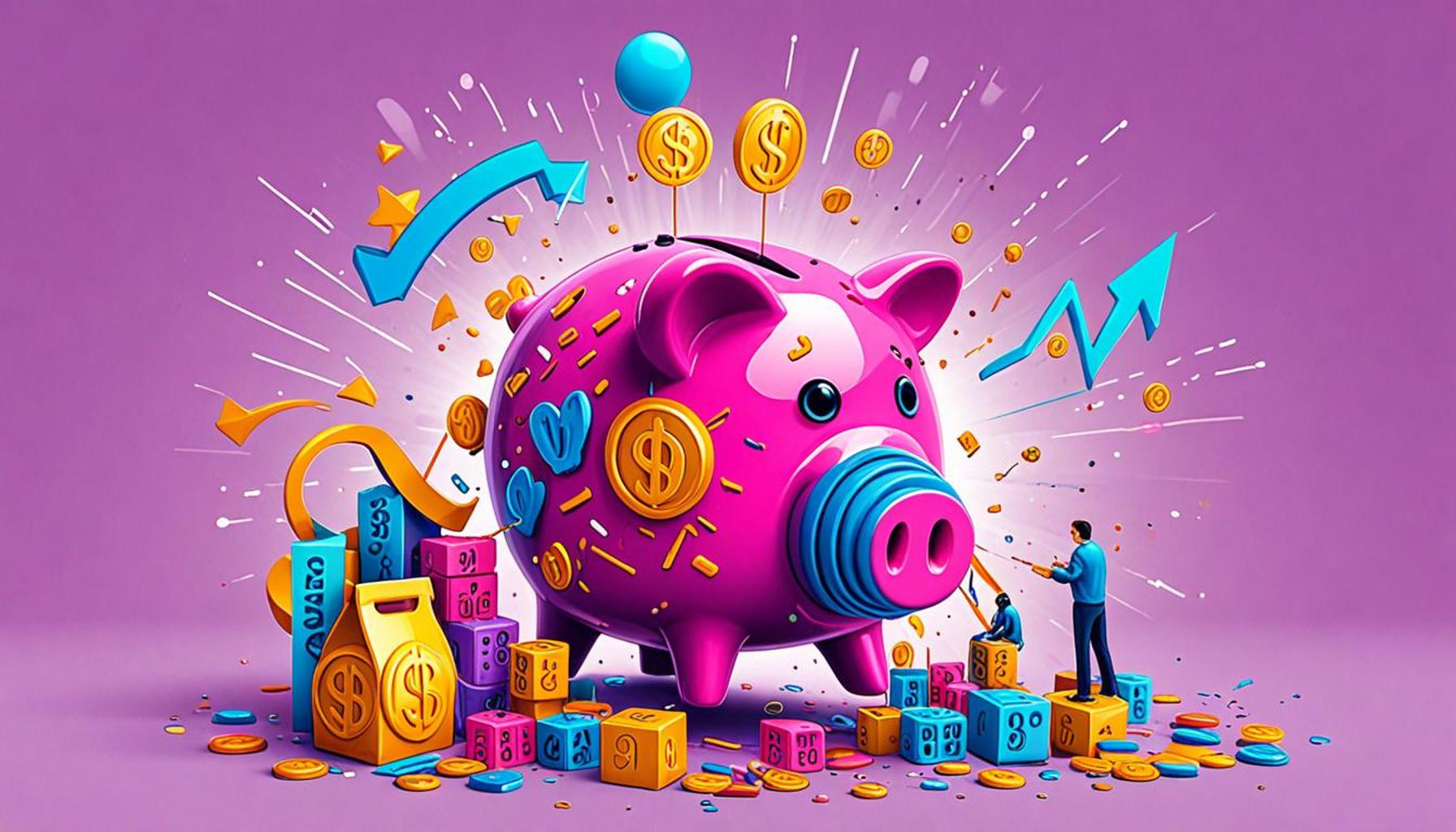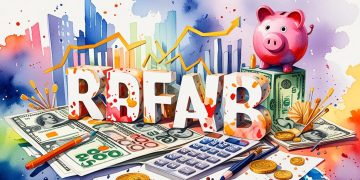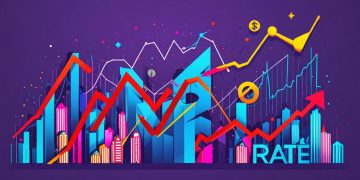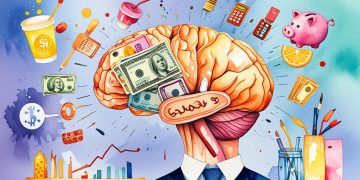Impact of Interest Rates on the Economy: What Consumers Need to Know

The Influence of Interest Rates on Economic Dynamics
The fluctuation of interest rates plays a pivotal role in shaping the economic landscape. Such rates, controlled by central banks like the Federal Reserve in the United States, are fundamental in determining the broader financial environment. A shift in interest rates can ripple through various sectors, affecting consumer behavior, business decisions, and the overall health of the economy. Understanding how these rates influence economic conditions is essential for individuals and businesses alike, especially when making financial choices.
Borrowing Costs
One of the most immediate effects of changing interest rates is on borrowing costs. When interest rates increase, the cost of loans also goes up. For consumers, this translates into higher monthly payments on mortgages, auto loans, and credit cards. For instance, if a homeowner with a $300,000 mortgage sees a rate increase from 3% to 4%, their monthly payment can rise by several hundred dollars. This increased financial burden may lead individuals to postpone home purchases or choose less expensive properties.
Consumer Spending
As borrowing costs rise, consumer spending tends to decline. Higher interest rates can lead to reduced disposable income, making it more challenging for consumers to finance everyday purchases. For example, credit card interest rates often soar during periods of high-interest rates, thereby increasing the cost of carrying debt. Consequently, consumers may choose to cut back on non-essential items, leading to a slowdown in retail sales. Over time, this decrease in consumer spending can adversely affect businesses, leading to lower revenue and, potentially, downsizing.
Investment Decisions
Interest rates also play a crucial role in shaping investment decisions within the business sector. Elevated rates can discourage companies from taking out loans to finance expansion projects or invest in new technologies. For example, a technology startup weighing the benefits of a new project may reconsider if borrowing costs are too high. This hesitation can stifle innovation and ultimately result in reduced job growth. In contrast, when interest rates are lower, businesses are more inclined to invest, potentially leading to increased employment opportunities and economic productivity.
Broader Economic Implications
As the Federal Reserve adjusts interest rates to meet its economic objectives, it also impacts critical areas such as inflation, employment rates, and the housing market. For instance, lower interest rates can stimulate the economy by making loans more affordable, encouraging businesses to expand and consumers to spend. Conversely, if the economy overheats, high levels of borrowing may lead to inflation, prompting the Federal Reserve to raise rates in an effort to stabilize prices.
In sum, interest rates significantly affect both personal finances and broader economic dynamics. By remaining vigilant about potential changes and understanding the implications of these fluctuations, consumers and businesses can make informed decisions that mitigate financial challenges. Awareness of how interest rates influence various aspects of the economy equips individuals with the knowledge necessary to navigate their financial futures effectively.
DISCOVER MORE: Click here for a step-by-step guide to loan approval
Understanding the Mechanism of Interest Rates
The relationship between interest rates and the economy is integral to financial decision-making for both consumers and businesses. Central banks manipulate interest rates to manage economic growth and inflation, with significant repercussions on various economic components. To truly comprehend the impact of interest rates, it is important to explore several key areas: borrowing behaviors, consumer confidence, and savings rates.
Borrowing Behaviors
The cost of borrowing has a direct correlation to interest rates. As rates rise, the expense associated with loans—such as mortgages, personal loans, and auto financing—also increases. Consumers may face situations such as:
- Increased Monthly Payments: A rise in interest rates can significantly elevate monthly financial obligations. For example, a parent financing a new vehicle may find that the car loan’s interest rate has escalated, resulting in heightened monthly payments and constraining their budgets.
- Accessibility to Credit: Higher rates may limit access to credit, particularly for those with lower credit scores. Lending institutions often tighten their lending criteria when interest rates climb, potentially sidelining consumers who rely on credit for major purchases.
- Refinancing Opportunities: Homeowners looking to refinance existing mortgages are typically dismayed by increased rates, leading many to postpone refinancing decisions. This hesitance can result in continued higher-interest payments on existing debt.
Consumer Confidence
The psychological impact of rising interest rates cannot be overlooked. When consumers perceive that borrowing is becoming costlier, this sentiment often results in a decrease in consumer confidence. A dip in confidence can lead to:
- Reduced Spending: Consumers may hesitate to make large purchases or invest in new properties out of fear that their financial commitments will become untenable.
- Increased Savings Rates: Higher rates can encourage consumers to save more, as the returns on savings accounts and certificates of deposit become more attractive. While this might seem beneficial, it can stifle immediate economic activity.
- Emergency Fund Focus: With uncertainty looming due to rising costs, consumers may prioritize building their emergency savings rather than engaging in discretionary spending.
Savings Rates
Interest rates significantly influence savings behaviors. When interest rates rise, consumers are typically incentivized to save more due to higher yields on savings accounts and other financial products. However, this relationship also leads to:
- Shifts in Financial Priorities: As the incentive to save attracts attention, consumers may prioritize long-term savings over spending, which can have a dampening effect on short-term economic growth.
- Market Reactions: Financial markets often respond to changes in consumer savings rates, reacting dynamically to fluctuations that can ripple through investment sectors and overall economic performance.
In summary, the influence of interest rates on borrowing behaviors, consumer confidence, and savings rates represents key dynamics in how consumers interact with the economy. Understanding these elements is pivotal for consumers to make informed financial decisions that align with the prevailing economic climate.
DIVE DEEPER: Click here to discover the impact of AI on banking
The Broader Economic Implications of Interest Rate Changes
Interest rates do not only influence individual consumer behavior but also have profound implications for the overall economy. The interplay between interest rates, economic growth, inflation, and employment is intricate and deserves careful examination. Understanding these connections enables consumers to appreciate the broader effects that changes in interest rates might have on their financial lives.
Economic Growth
Interest rates serve as a tool for stimulating or curbing economic growth. When central banks set interest rates low, it creates a favorable environment for investment. Businesses typically respond by expanding operations, which can lead to:
- Increased Hiring: As companies invest in growth, they often require additional workforce, resulting in more job opportunities for consumers.
- Enhanced Consumer Spending: Lower borrowing costs encourage consumers to take out loans for major purchases, thereby boosting consumption, a critical component of GDP.
- Capital Availability: Lower interest rates make financing more accessible for startups and small businesses, potentially spurring innovation and entrepreneurship, which contributes to economic diversification.
Inflationary Pressures
In contrast, when interest rates are high, the costs associated with borrowing can lead to diminished spending and investment. This has implications for inflation, which can manifest in the following ways:
- Decreased Demand: Higher interest rates can cool consumer spending and limit business expansion, reducing overall demand for goods and services. This decrease can help stabilize prices but might also lead to economic stagnation.
- Cost-Push Inflation: Businesses facing higher financing costs may pass these expenses onto consumers, leading to inflated prices even when demand is not increasing.
Employment Trends
The labor market is significantly influenced by interest rate environments. As economic conditions evolve with interest rate changes, employment outcomes may vary:
- Job Creation Slowdown: In periods of high interest rates, companies may implement hiring freezes or layoffs to manage rising operational costs, affecting job availability and security for consumers.
- Wage Growth Implications: In tighter labor markets, companies may struggle to attract talent, potentially leading to increased wage competition, though this can be constrained by overall economic slowdowns driven by high rates.
The Impact on Real Estate
One of the most visible effects of interest rate changes is observed in the real estate market. The link between interest rates and housing costs is crucial for consumers considering home ownership:
- Home Purchase Affordability: As interest rates rise, mortgage rates increase, which can reduce affordability for potential homebuyers. Many may find their borrowing capacity diminished, leading to a decline in housing market activity.
- Property Value Pressures: Increased interest rates can cool off housing demand, which may result in sluggish property value appreciation or even declines in some markets.
- Rental Market Dynamics: Higher mortgage costs often shift demand from purchase to rental, leading to increased rental prices as consumers seek lower initial housing investment.
In summary, consumers should be cognizant of the multifaceted effects of interest rates on various sectors of the economy, from growth and inflation to employment and the housing market. Being informed about these dynamics enables consumers to anticipate how economic conditions might influence their financial decisions and long-term planning. Understanding the intricacies of interest rates cultivates an awareness that is essential for navigating the economic landscape effectively.
DISCOVER MORE: Click here to learn about the long-term benefits of investing in education
Conclusion
Understanding the impact of interest rates on the economy is not merely an academic exercise; it is a vital aspect of informed consumer behavior. As we have explored, interest rates play a pivotal role in shaping economic growth, influencing inflationary pressures, affecting employment trends, and determining the dynamics within the real estate market. Each shift in interest rates can ripple through various sectors, creating opportunities as well as challenges for consumers.
With lower interest rates, consumers often experience enhanced purchasing power and greater access to credit, fostering spending and investment. Conversely, higher rates may lead to increased borrowing costs, constraining consumer expenditure and potentially slowing down the economy. It is essential for consumers to remain vigilant and aware of these fluctuations, as they can directly affect their financial health, home purchases, and job security.
Moreover, as policymakers navigate the complexities of economic stability, consumers must consider how these changes affect not only their individual circumstances but the broader economic landscape. By developing an understanding of interest rates and their multifaceted influences, consumers can better prepare for financial decisions, mitigate risks, and seize opportunities as they arise. Staying informed is crucial in an ever-evolving financial world, where the implications of interest rates are invariably intertwined with personal and economic prosperity.









